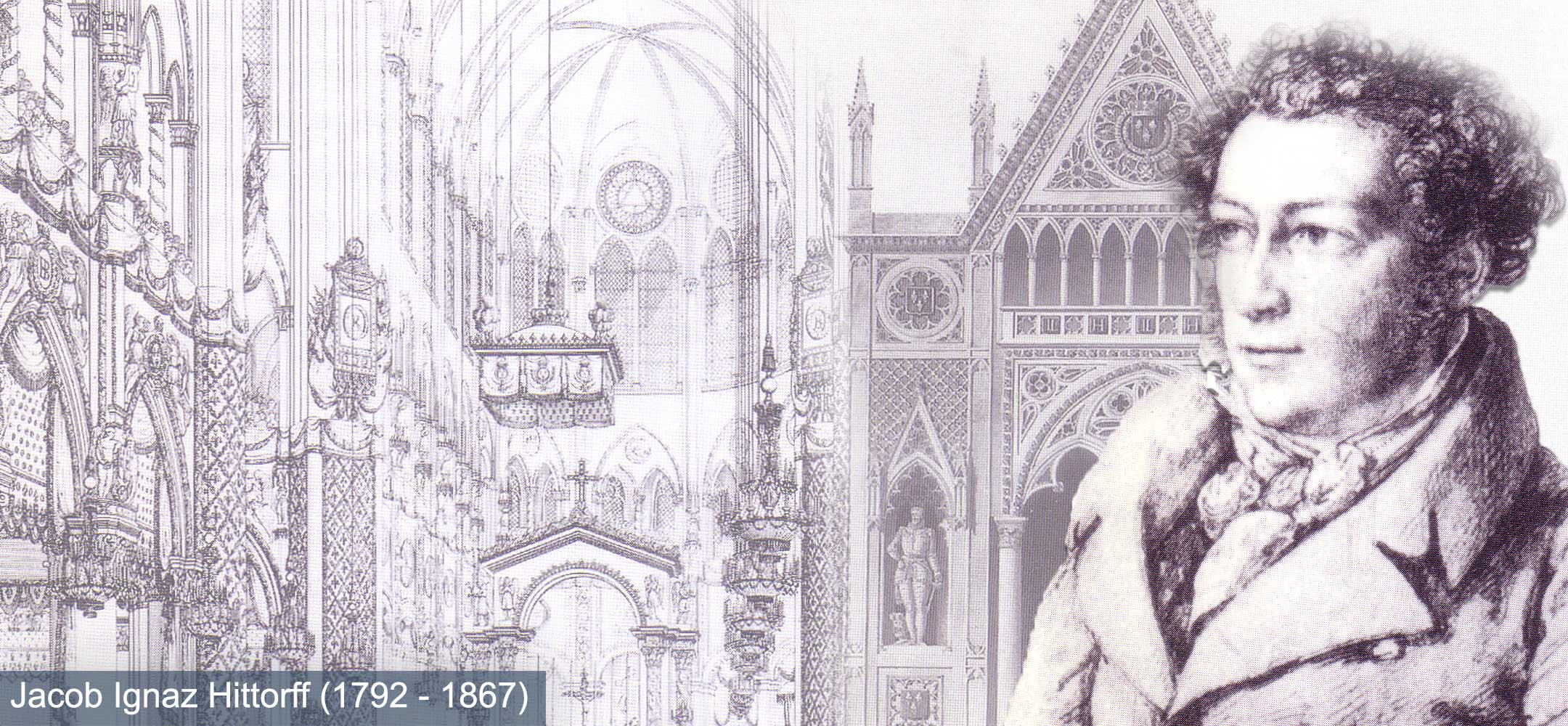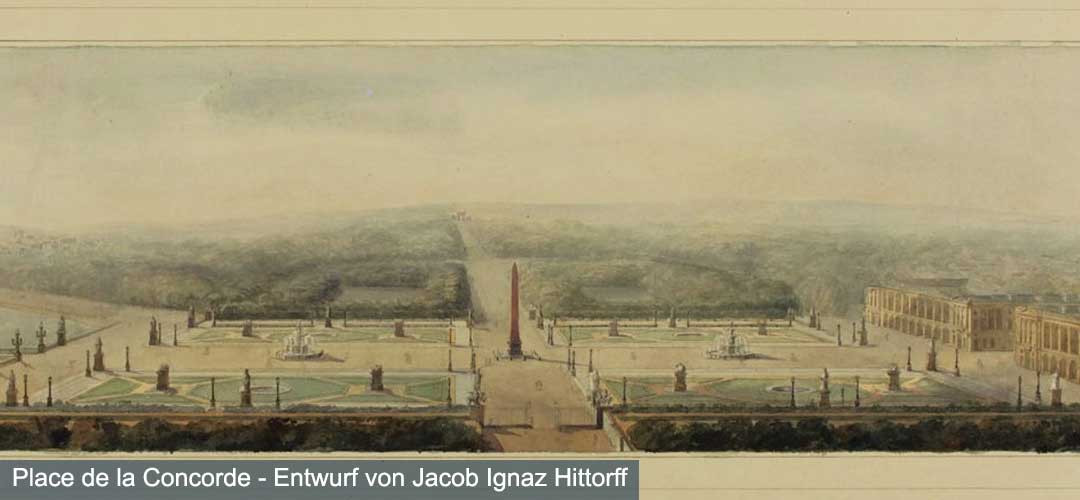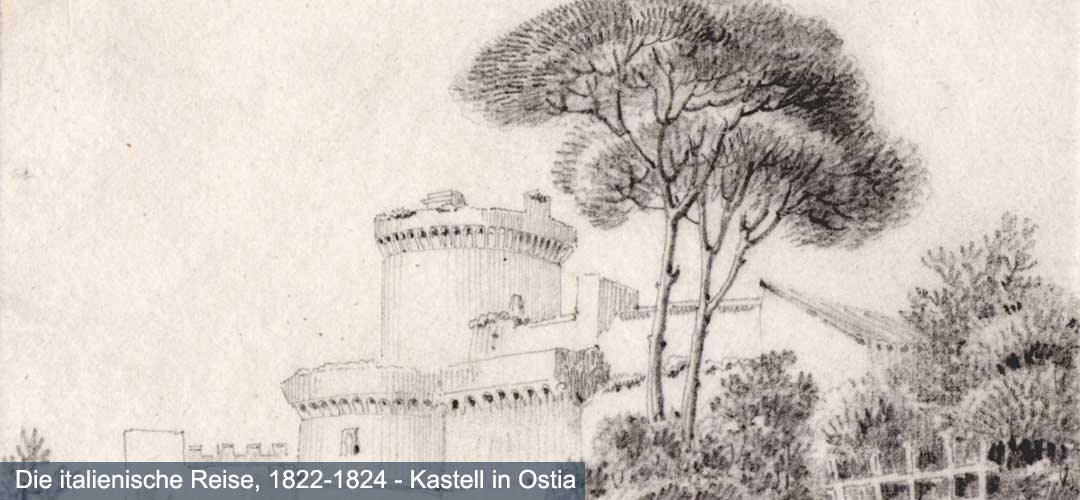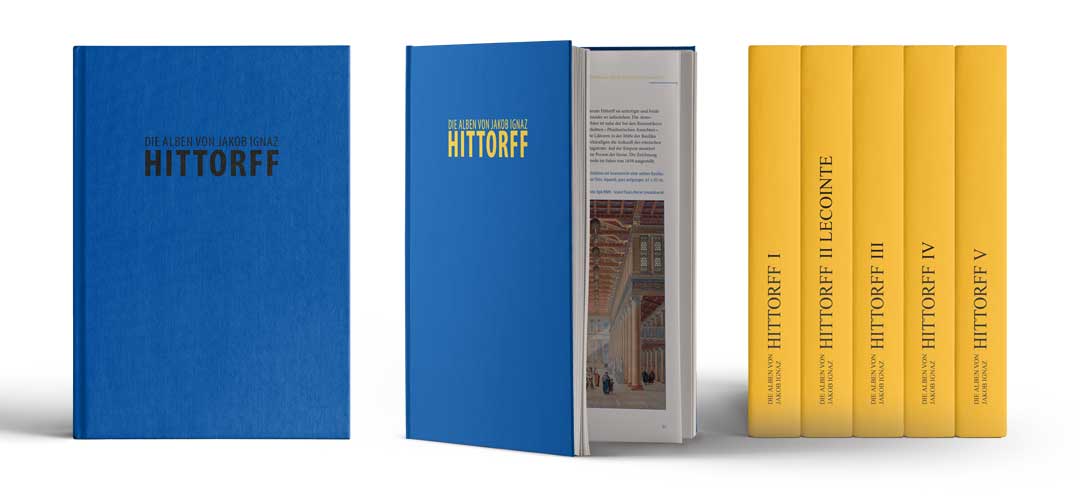A COLOGNE DESIGNED PARIS
The artistic estate of the architect Jakob Ignaz Hittorff came to the City of Cologne after the death of his son and heir Charles-Joseph Hittorff, who died without children, in 1898. The books on art and archaeology acquired by Hittorff on long journeys locally came via the city library to the USB, which was newly established in 1920. There are even albums with around 2500 original drawings. These master drawings and working sketches are currently being published step by step.
THE HITTORFF COLLECTIONS
The scholarly edition of the albums of architectural drawings by J.I. Hittorff held by the USB Cologne is being undertaken by the art historian Michael Kiene. So far, seven Hittorff volumes have been published in the "Schriften der Universitäts- und Stadtbibliothek Köln":
Bd. 1 Die Bauprojekte, 1821-1858 (1995)
Bd. 2 Die Alben von Jean-François-Joseph Lecointe (1783-1858). Architekturen, Skizzen und Visionen (2005)
Bd. 3 Die italienische Reise, 1822-1824 (2012)
Bd. 4 Das Album "Sicile Moderne" Zeichnungen von einer Pilgerfahrt ins wahre Paradies der Künste (2013)
Bd. 5: "SICILE ANCIENNE“ Hittorff and the architecture of classical Sicily" (2017)
Bd. 6: "Hommage für Hittorff" : 1792-1867 : Bilder, Bücher und Würdigungen" (2020)
Bd. 7: Color into life : Hittorff's laves émaillées, 1834-1841 (2018)
Bd. 8: Hittorff Réseautiste : ses dessins et textes conservés à la bibliothéque de l’Institut de France et dans sa bibliothèque personnelle, à l´Université de Cologne, 2024
A large part of Hittorff's graphic estate is housed in the Graphic Collection of the Wallraf-Richartz-Museums & Fondation Corboud Cologne.
Some parts of the estate are in the Historischen Archiv der Stadt Köln and the Cologne City Museum. Other Hittorff objects are now in museums and archives in Paris, Italy and the USA.
Contact person at the Hittorff Research Centre:
Prof. Dr. Michael Kiene
Tel.: 0221 470-3199
E-Mail an Michael Kiene
Jacques-Ignace Hittorff - 50 ans architecture parisienne
Born in Cologne, Hittorff was initially a French citizen following the annexation of the left bank of the Rhine by France from 1801 to 1814. During this time he began his studies in Paris in 1810. In 1811 he enrolled at the École nationale supérieure des beaux-arts de Paris and at the same time worked for Charles Percier. Encouraged by his teacher François-Joseph Bélanger, he witnessed the construction of the Halle aux Blés in the Hall Quarter as Bélanger's assistant. Hittorff married the daughter of the French architect Jean-Baptiste Lepère and in 1842, by a decree of King Louis-Philippe, he was finally granted French citizenship, which he had sought because of his candidacy for admission to the Institut de France. He was instrumental in the creation of the reception buildings for the restitution of the Bourbons in 1814, for which he was rewarded with the title of 'Inspecteur du Roi pour les fêtes et cérémonies'. From 1818 to 1848 he was court architect as Belanger's successor. In the Place de la Concorde, Hittorf created the base of the Luxor obelisk and two fountains between 1834 and 1840. With the construction of the Gare du Nord, his last major building (completed in 1864), he made a significant contribution to the field of iron construction, which was still young at the time.




